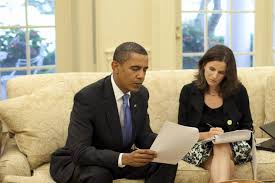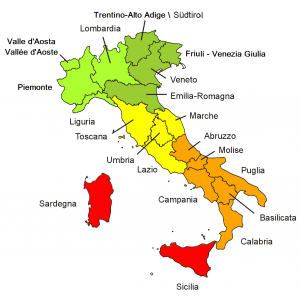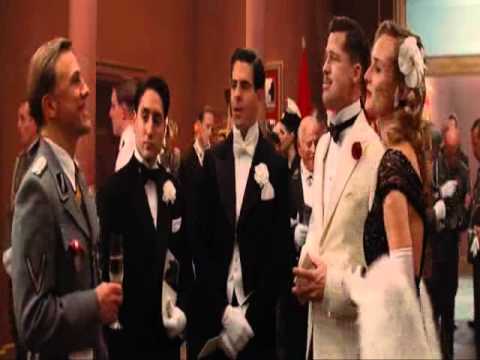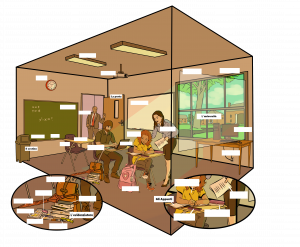1.1: Capitolo 1
- Page ID
- 170785
\( \newcommand{\vecs}[1]{\overset { \scriptstyle \rightharpoonup} {\mathbf{#1}} } \)
\( \newcommand{\vecd}[1]{\overset{-\!-\!\rightharpoonup}{\vphantom{a}\smash {#1}}} \)
\( \newcommand{\id}{\mathrm{id}}\) \( \newcommand{\Span}{\mathrm{span}}\)
( \newcommand{\kernel}{\mathrm{null}\,}\) \( \newcommand{\range}{\mathrm{range}\,}\)
\( \newcommand{\RealPart}{\mathrm{Re}}\) \( \newcommand{\ImaginaryPart}{\mathrm{Im}}\)
\( \newcommand{\Argument}{\mathrm{Arg}}\) \( \newcommand{\norm}[1]{\| #1 \|}\)
\( \newcommand{\inner}[2]{\langle #1, #2 \rangle}\)
\( \newcommand{\Span}{\mathrm{span}}\)
\( \newcommand{\id}{\mathrm{id}}\)
\( \newcommand{\Span}{\mathrm{span}}\)
\( \newcommand{\kernel}{\mathrm{null}\,}\)
\( \newcommand{\range}{\mathrm{range}\,}\)
\( \newcommand{\RealPart}{\mathrm{Re}}\)
\( \newcommand{\ImaginaryPart}{\mathrm{Im}}\)
\( \newcommand{\Argument}{\mathrm{Arg}}\)
\( \newcommand{\norm}[1]{\| #1 \|}\)
\( \newcommand{\inner}[2]{\langle #1, #2 \rangle}\)
\( \newcommand{\Span}{\mathrm{span}}\) \( \newcommand{\AA}{\unicode[.8,0]{x212B}}\)
\( \newcommand{\vectorA}[1]{\vec{#1}} % arrow\)
\( \newcommand{\vectorAt}[1]{\vec{\text{#1}}} % arrow\)
\( \newcommand{\vectorB}[1]{\overset { \scriptstyle \rightharpoonup} {\mathbf{#1}} } \)
\( \newcommand{\vectorC}[1]{\textbf{#1}} \)
\( \newcommand{\vectorD}[1]{\overrightarrow{#1}} \)
\( \newcommand{\vectorDt}[1]{\overrightarrow{\text{#1}}} \)
\( \newcommand{\vectE}[1]{\overset{-\!-\!\rightharpoonup}{\vphantom{a}\smash{\mathbf {#1}}}} \)
\( \newcommand{\vecs}[1]{\overset { \scriptstyle \rightharpoonup} {\mathbf{#1}} } \)
\( \newcommand{\vecd}[1]{\overset{-\!-\!\rightharpoonup}{\vphantom{a}\smash {#1}}} \)
\(\newcommand{\avec}{\mathbf a}\) \(\newcommand{\bvec}{\mathbf b}\) \(\newcommand{\cvec}{\mathbf c}\) \(\newcommand{\dvec}{\mathbf d}\) \(\newcommand{\dtil}{\widetilde{\mathbf d}}\) \(\newcommand{\evec}{\mathbf e}\) \(\newcommand{\fvec}{\mathbf f}\) \(\newcommand{\nvec}{\mathbf n}\) \(\newcommand{\pvec}{\mathbf p}\) \(\newcommand{\qvec}{\mathbf q}\) \(\newcommand{\svec}{\mathbf s}\) \(\newcommand{\tvec}{\mathbf t}\) \(\newcommand{\uvec}{\mathbf u}\) \(\newcommand{\vvec}{\mathbf v}\) \(\newcommand{\wvec}{\mathbf w}\) \(\newcommand{\xvec}{\mathbf x}\) \(\newcommand{\yvec}{\mathbf y}\) \(\newcommand{\zvec}{\mathbf z}\) \(\newcommand{\rvec}{\mathbf r}\) \(\newcommand{\mvec}{\mathbf m}\) \(\newcommand{\zerovec}{\mathbf 0}\) \(\newcommand{\onevec}{\mathbf 1}\) \(\newcommand{\real}{\mathbb R}\) \(\newcommand{\twovec}[2]{\left[\begin{array}{r}#1 \\ #2 \end{array}\right]}\) \(\newcommand{\ctwovec}[2]{\left[\begin{array}{c}#1 \\ #2 \end{array}\right]}\) \(\newcommand{\threevec}[3]{\left[\begin{array}{r}#1 \\ #2 \\ #3 \end{array}\right]}\) \(\newcommand{\cthreevec}[3]{\left[\begin{array}{c}#1 \\ #2 \\ #3 \end{array}\right]}\) \(\newcommand{\fourvec}[4]{\left[\begin{array}{r}#1 \\ #2 \\ #3 \\ #4 \end{array}\right]}\) \(\newcommand{\cfourvec}[4]{\left[\begin{array}{c}#1 \\ #2 \\ #3 \\ #4 \end{array}\right]}\) \(\newcommand{\fivevec}[5]{\left[\begin{array}{r}#1 \\ #2 \\ #3 \\ #4 \\ #5 \\ \end{array}\right]}\) \(\newcommand{\cfivevec}[5]{\left[\begin{array}{c}#1 \\ #2 \\ #3 \\ #4 \\ #5 \\ \end{array}\right]}\) \(\newcommand{\mattwo}[4]{\left[\begin{array}{rr}#1 \amp #2 \\ #3 \amp #4 \\ \end{array}\right]}\) \(\newcommand{\laspan}[1]{\text{Span}\{#1\}}\) \(\newcommand{\bcal}{\cal B}\) \(\newcommand{\ccal}{\cal C}\) \(\newcommand{\scal}{\cal S}\) \(\newcommand{\wcal}{\cal W}\) \(\newcommand{\ecal}{\cal E}\) \(\newcommand{\coords}[2]{\left\{#1\right\}_{#2}}\) \(\newcommand{\gray}[1]{\color{gray}{#1}}\) \(\newcommand{\lgray}[1]{\color{lightgray}{#1}}\) \(\newcommand{\rank}{\operatorname{rank}}\) \(\newcommand{\row}{\text{Row}}\) \(\newcommand{\col}{\text{Col}}\) \(\renewcommand{\row}{\text{Row}}\) \(\newcommand{\nul}{\text{Nul}}\) \(\newcommand{\var}{\text{Var}}\) \(\newcommand{\corr}{\text{corr}}\) \(\newcommand{\len}[1]{\left|#1\right|}\) \(\newcommand{\bbar}{\overline{\bvec}}\) \(\newcommand{\bhat}{\widehat{\bvec}}\) \(\newcommand{\bperp}{\bvec^\perp}\) \(\newcommand{\xhat}{\widehat{\xvec}}\) \(\newcommand{\vhat}{\widehat{\vvec}}\) \(\newcommand{\uhat}{\widehat{\uvec}}\) \(\newcommand{\what}{\widehat{\wvec}}\) \(\newcommand{\Sighat}{\widehat{\Sigma}}\) \(\newcommand{\lt}{<}\) \(\newcommand{\gt}{>}\) \(\newcommand{\amp}{&}\) \(\definecolor{fillinmathshade}{gray}{0.9}\)Benvenut* a tutt*!
1.1 Introduzione al capitolo. I saluti (Greetings)
Formale e informale
Tu or Lei? The simple rule for informal and formal you is that you use the informal tu for family, friends, children, and animals. The formal Lei is used with older people who you may know well but are not family, with strangers, and with people in professional contexts (teacher, wait staff, service providers, sales associates), including people you address with titles. However, the actual rules are much more complicated. In general, young people use the informal with other young people, and, overall, Italians today are much less formal than they were just a few generations ago. Although Italians do not expect non-Italians to know all of the rules for using tu and Lei, they will appreciate your efforts to use both, even if imperfectly.
Una conversazione informale

- Ciao, mi chiamo Cosimo.
- Io mi chiamo Valeria. Come stai?
- Benone! Grazie, e tu?
- Bene, grazie.
- Di dove sei?
- Sono di Roma. E tu?
- Sono di Firenze.
- A presto!
Una conversazione formale

- Buongiorno, Professoressa Di Fabio. Come sta?
- Buongiorno, Presidente Obama. Sto bene, grazie. E Lei?
- Non c’è male.
- Di dov’è?
- Sono di Vasto. Sono italiana. E Lei?
- Sono delle Hawaii, ma adesso abito a Washington D.C.
- Arrivederci!
| Informale | Formale | |
| Hello | Ciao | Buongiorno, buonasera* |
| What is your name? | Come ti chiami? | Come si chiama? |
| Where are you from? | Di dove sei? | Di dov’è? |
| How are you? | Come stai? | Come sta? |
| Goodbye, See you later | Ciao; A presto; A dopo; etc. | Arrivederci; ArrivederLa |
Risposte alla domanda: Come stai?
| Benissimo | 😁 !!!! |
| Bene | 😀 |
| Così Così | 😑 |
| Insomma | 😏 |
| Male | 😢 |
| Malissimo | 😱 |
Esercizi
A. Formale o Informale? Choose between the options listed below to indicate how you would address the people listed in each question.
- La professoressa Masterson: Di dov’è? / Di dove sei?
- Il primo ministro Trudeau: Come stai? / Come sta?
- Un bambino: ArrivederLa / Ciao
- La mamma: Ciao / Buongiorno
- Un altro studente: Come ti chiami? / Come si chiama?
B. Una conversazione informale. Find a partner and perform the informal conversation, so that it reflects your personal information.
C. Una conversazione formale. Choose a new identity for yourself from the choices below (or come up with your own idea) and perform the formal conversation with a partner to reflect the personal information of the person you chose.
Mother Teresa
Il Dalai Lama
Tom Brady
Il Principe Harry
Subbaswamy
Kim Kardashian
Miley Cyrus
Michelle Obama
Watch Brad Pitt try to say goodbye in Italian:
1.2 L’alfabeto italiano
Listen to the Italian alphabet below:
| a [a] Alessandro | n [enne] Nicolina |
| b [bi] Beatrice | o [o] Olivia |
| c [ci] Cara | p [pi] Pietro |
| d [di] Daniele | q [cu] Quintino |
| e [e] Elvira | r [erre] Renata |
| f [effe] Flavia | s [esse] Sandro |
| g [gi] Guido | t [ti] Tatiana |
| h [acca] Harry | u [u] Umberto |
| i [i] Ilenia | v [vu] Valentina |
| l [elle] Luca | z [zeta] Zaccaria (m.) |
| m [emme] Maria, Mario |
Nota culturale
A number of masculine names end in -a in Italian, such as, Andrea, Luca, Mattia, Nicola, Zaccaria, etc.
The following letters occur only in foreign borrowed words, such as jazz, karatè, sexy, yacht:
| j [i lunga or jay (recent)] Julie | x [ics] Xavier |
| k [kappa] Kerri | y [ipsilon] Yana |
| w [doppia vu] William |
Esercizi
A. E Lei? Imagine you are filling out a form at the Italian consulate and are asked to spell your full name. Your classmate will play the role of the consulate employee and will ask for your last name, cognome, and first name, nome, and will write both down. He or she will spell both back to you to verify the spelling.
Ex. Cognome?
– Rossi.
– R-O-S-S-I. Nome?
– Livia.
-L-I-V-I-A. Livia.
B. L’Italia.

Spell the name of the capital of one of the 20 Italian regions. Your partner will guess which region the capital is from.
Ex. P-A-L-E-R-M-O
– La Sicilia
C. Parole prestate. (Borrowed words). Parte I. With a partner, take 3 minutes and come up with as many Italian words that Americans use regularly in English as you can. (ex. – pizza, ravioli, cappuccino, opera, etc).
Parte II. Find another group to partner with and spell ten of the words on your list for the other group and then switch roles. Which group spelled more words correctly?
D.L’impiccato. With a partner, play hangman. Choose a word and write out the blanks and then see if your partner can guess all of the letters before the whole body is drawn. The person guessing should pronounce all of the letters in Italian!
1.3 I numeri (numbers)
| 1 uno | 11 undici | 21 ventuno | 40 quaranta |
| 2 due | 12 dodici | 22 ventidue | 50 cinquanta |
| 3 tre | 13 tredici | 23 ventitré (ventitre) | 60 sessanta |
| 4 quattro | 14 quattordici | 24 ventiquattro | 70 settanta |
| 5 cinque | 15 quindici | 25 venticinque | 80 ottanta |
| 6 sei | 16 sedici | 26 ventisei | 90 novanta |
| 7 sette | 17 diciassette | 27 ventisette | 100 cento |
| 8 otto | 18 diciotto | 28 ventotto | 1000 mille |
| 9 nove | 19 diciannove | 29 ventinove | 2000 duemila |
| 10 dieci | 20 venti | 30 trenta* |
*To form numbers 31-99 follow the pattern shown from 21-29. You add the last digit to the root number without changes, except for one and eight because of the double vowel. In these cases you drop the last letter of the root word. (ex. trentuno (31), quarantotto (48), novantadue (92), etc).
Esercizi
A. Contiamo! (Let’s count!) Challenge your partner to count out loud in Italian.
- Count in multiples of 2 from 1 to 20
- Count in multiples of 3 from 30 to 60
- Count in multiples of 5 from 50 to 70
- Count backward from 100 to 85
- Count backward from 45 to 25
B. Qual è il tuo numero di telefono? (What’s your phone number?) Ask five classmates for their phone numbers and write down the numbers.
Ex. Qual è il tuo numero di telefono?
Il mio numero di telefono è sei-uno-sette-sei-otto-due-sette-nove-tre-nove.
C. Tombola! Use the bingo board to draw in numbers from 1-100. Your instructor will call out numbers. If you have one in your board, cross it out. Once you have five spaces in a row, yell out Tombola! You will need to repeat the numbers back to your instructor correctly to win. The ‘x’ is a free space.
|
|
||||
|
|
||||
|
|
X | |||
|
|
||||
|
|
1.4 I nomi (nouns)
What is a noun?
A noun is a word that can describe a person, animal, place, thing, or even idea. So, as you can see, a noun is not only a word that names something that is tangible (i.e. – something you can see, smell, taste, or touch) such as Anna, cat, wine, or Mercedes, it can also be the name of something that is abstract (i.e. that you cannot touch), such as love, peace, democracy, and humor.
In Italian, a noun has a gender; that is, it can be classified according to whether it is masculine or feminine. In Italian all nouns, common nouns and proper nouns, have a gender. Do not confuse these grammatical terms with biological terms “male” and “female.” Only a few Italian nouns have a grammatical gender tied to biological sex; most nouns have a gender that must be memorized. For example, the grammatical gender of the noun la persona is always feminine, regardless of whether it refers to a man or a woman and the grammatical gender of il bebé is always masculine, even if the baby being referred to is female.
Nota culturale
There is another important difference between gender as Americans currently express it and how Italians describe their gender identities. While sometimes * or @ can be used in written language to avoid indicating a binary gender, there is currently no option to describe non-binary identities. (i.e. – There is no equivalent to they/them/their). Until the Italian language develops options to express these pronouns, each student will need to choose to describe themselves with either masculine or feminine adjectives. You are free to identify as whatever is more descriptive of who you are.
| Nouns ending in a consonant (borrowed) are generally masculine | il computer lo sport il film il weekend |
| Nouns ending in –o are usually masculine | il libro il cancellino il gatto il maestro |
| Nouns ending in –a and à are usually feminine | la studentessa la pasta la matita l’università |
| Nouns ending in –e can either be masculine or feminine | il colore (m.) l’attrice (f.) l’evidenziatore (m.) la lezione (f.) |
Important exceptions (tricky words)
- Nouns ending in -ma come from Greek and are masculine (programma, problema, etc.)
- Shortened words receive their gender from the longer form:
- bici (f) from bicicletta
- foto (f) from fotografia
- cinema (m) from cinematografo
- moto (f) from motocicletta
Finding the rules. Which endings are masculine and which are feminine? Complete the table below.
-o -a -e (often -me, or re) -e (zione) consonant -ma -à
| Maschile (masculine) | Femminile (feminine) |
Esercizi
A. Parole prestate: M o F? Look at the words that you listed in exercise 1.2 C and then choose your favorite ten words and decide if they are masculine or feminine.
Ex. l’opera M F
1.
2.
3.
4.
5.
6.
7.
8.
9.
10.
B. M o F? Decide if the words below are masculine or feminine and underline or circle either M or F.
Ex. la studentessa M F
| 1. libro | M F |
| 2. conversazione | M F |
| 3. colore | M F |
| 4. bar* | M F |
| 5. università | M F |
| 6. computer | M F |
| 7. bici | M F |
| 8. ragazza | M F |
| 9. classe | M F |
| 10. lezione | M F |
*Nota culturale
In Italy, the most common, typical establishment that serves refreshments, such as coffee and pastries, is the bar. You can find a bar literally anywhere: even the smallest paesino in the hills or the mountains is likely to have one in the main square. The Italian word bar comes from English, but it’s actually a false friend: unlike American bars, which serve alcohol and are generally distinct from coffee shops or cafés, Italian bars serve all kinds of beverages—coffee, tea, and alcohol. They also serve food, both sweet (pastries) and savory (usually panini, pizzette, focacce, etc.). They’re usually open throughout the day, so people can have breakfast there, grab a panino for lunch, and/or have a drink with their friends after dinner. So if you hear an Italian say, Vado a fare colazione al bar, at 7:30 am, it doesn’t mean they’re having a cocktail for breakfast!
So how do you order at an Italian bar? It depends! If it’s a small bar, you just walk up to the bancone (i.e., the “bar” or the actual counter at which food and drinks are served), tell the barista what you’d like to have, pay, and leave. That’s the easiest case scenario. At larger bars where there are waiters, you can have servizio al tavolo, i.e., you can sit at a table and the waiter will take your order. How do you pay? In most cases, you can pay alla cassa (at the register) when you’re done. However, in larger cities, like Milan or Rome, it’s common to pay at the moment you place your order, irrespective of how large or small the establishment is: you go to the register first, you pay, they give you a scontrino (receipt), then you show the barista the scontrino and they’ll make you whatever you ordered. At bars that expect you to do this, you’ll usually see a poster that says, Si prega di fare lo scontrino alla cassa prima della consumazione (“Please get a receipt at the cash register before eating or drinking”). It sounds counterintuitive, but it’s actually done to avoid confusion, mistakes… and to prevent i furbi (i.e., people who think they’re clever) from leaving without paying!
1.5 Gli articoli indeterminativi (Indefinite articles)
An indefinite article is how “a”, “an”, or “one” is expressed in Italian. There are four forms: un, uno, un’ and una, and their usage depends on whether the words they modify are masculine or feminine, and what letter(s) the words begin with. Indefinite articles are only used with singular nouns.
Here are the forms. Can you identify the rules?
| un libro | un cellulare | un orologio |
| uno studente | uno zaino | uno schermo |
| una studentessa | una penna | una lezione |
| un’agenda | un’amica | un’università |
Which forms are maschile (masculine)? Which forms are femminile (feminine)?
| maschile | |
| femminile | |
What are the rules? Complete the table with un, uno, un’, una.
| articolo indeterminativo | quando si usa? | |
| maschile | before *almost all consonants and vowels | |
| before s+consonant or z | ||
| femminile | before consonants | |
| before vowels |
Esercizi
A. Maschile o femminile? Use the indefinite article to determine if the following words are masculine or feminine. Write M or F in the space provided.
Ex. uno studente _M____
- una calcolatrice______________
- un proiettore ______________
- un computer ______________
- una lezione ______________
- una chiave ______________
- un caffè ______________
- un’università ______________
- una luce ______________
- un cellulare ______________
- un evidenziatore ______________
B. Cosa c’è nello zaino? Write the correct articolo indeterminativo for each object.
Ex. _un____libro
Ci sono molte cose nel mio zaino. Per esempio, c’è…
______________ quaderno, ______________ matita, ______________ agenda, ______________ libro d’italiano, ______________ smartphone, ______________ ombrello, ______________ portatile, ______________ astuccio (pencil case), ______________ bottiglia d’acqua, ______________ cartella.
C.Parliamo! Cosa c’è nel tuo zaino? Work in pairs. Take turns asking each other about the contents of your bags or backpacks. Follow the model.
S1: C’è un libro?
S2: Sì, c’è un libro.
S1: C’è un ombrello?
S2: No, non c’è un ombrello.
After your conversation, complete the following sentence: Nello zaino/nella borsa di ________________________________________, c’è ________________________________________ , ________________________________________, e ________________________________________. Non c’è ________________________________________ o ________________________________________.
1.6 I plurali (Plurals)
In English, making a word plural generally involves adding an “s” to the end of the word. There are also irregular plural forms that do not follow this rule (like fish! Or mice!). Making a word plural in Italian involves changing the last letter of the word–not adding a letter, but changing the last letter. Of course, there are irregulars, but the majority of the words follow a standard pattern. Look at the table below. Can you determine what the pattern is?
| singolare | plurale |
| un libro | due libri |
| uno studente | due studenti |
| una penna | due penne |
| un computer | due computer |
| un’università | due università |
What are the rules? Complete the sentences with the correct letters.
- Words ending in “o” change to _____.
- Words ending in “e” change to _____.
- Words ending in “a” change to ______.
- Words ending in ____________________ or ____________________ do not change.
Study tips
- That final -e can be tricky, because the word could be masculine or feminine in the singular, or feminine plural! The article preceding the word will help you recognize its gender and number.
- Words that end in -io, such as orologio or studio, simply drop the final -i when forming the plural. There is no need to have two!
- Of course, there are also irregular plurals that do not follow these rules. Some are just completely different, like uomo, which becomes uomini in the plural. That one is pretty unique. Some others actually switch genders from the singular to the plural! A lot of body parts are like this: il braccio (arm) becomes le braccia in the plural. We’ll study those in greater depth a bit later.
Other words, instead, do follow patterns. See some examples below and then complete the rules.
| un/una musicista | due musicisti/e |
| un problema | due problemi |
| una bici(cletta) | due bici(clette) |
- Words ending in “ista” are both masculine and feminine in the singular, but in the plural the masculine form ends in __________ and the feminine form ends in __________.
- Words ending in “ma” are masculine / feminine (choose the correct answer). They change to _____ in the plural.
- Shortened words (like bici, moto, foto) do / do not change from the singular to the plural. The longer version of these words do / do not change according to normal rules.
Esercizi
A. Singolare o plurale? Indicate if the following nouns are singolari (S) or plurali (P).
Ex. libro _S____
- quaderno __________
- studentesse __________
- banchi __________*
- cellulare __________
- panini __________
- chiave __________
- borsa __________
- schermi __________
*Study tip
If the singular masculine word ends in -co (like banco) or -go (like lago), it is often (but not always!) necessary to add an “h” before the final letter when the plural is formed, to preserve the hard sounds of the “c” and the “g”. There are some exceptions, such as amico, which becomes amici in the plural form. For feminine words that end in -ca (like biblioteca) OR or –ga (like riga), the “h” before the final letter is necessary.
B. Cosa c’è nell’aula? Complete the description of the classroom with the plural form of the word in parentheses.
Ex. quaderno→ quaderni
Ci sono molte cose nella nostra vecchia aula. Siamo in 15 ____________________ (studente), quindi ci sono 15 ____________________ (libro) sui nostri ____________________ (banco). Non ci sono ____________________ (cellulare) perché alla nostra professoressa non piacciono. Ci sono molti ____________________ (zaino) di molti colori, ma ci sono pochi ____________________ (computer). Ci sono due ____________________ (finestra) e due ____________________ (porta). La professoressa scrive su due ____________________ (lavagna) con ____________________ (gesso) multicolori.
C. Continua la conversazione! Can you add anything to the above description? Work with a partner to list the things you see in the classroom. Write the number of the object, and form the plurals accordingly. Make it a competition! Who can identify the most?
D. Gioco della memoria. Your instructor will show you a series of objects. You will have 30 seconds to study them before they will be covered up again. See how many you and your partner can remember! List the names of the objects along with their quantity.
1.7 Gli articoli determinativi (Definite articles)
As you learned previously, there are four ways to express “a” or “an” in Italian. Those are known as the indefinite articles, and they are used to speak about a general person, place, thing, or ideas. There are also definite articles, which represent “the”, and they can be used to talk about more specific people, places, things. or ideas. In Italian there are seven (7!) different ways to say “the”, and their usage depends on whether the word they modify is masculine or feminine, singular or plural, and what letter(s) the word begins with.
Here are the forms. Can you identify the rules?
| maschile | il libro lo studente l’orologio |
i libri gli studenti gli orologi |
| femminile | la penna l’agenda |
le penne le agende |
What are the rules for singular words? And for plurals? Complete the table with il, lo, l’, la, i, gli, or le.
| singolare | plurale | quando si usa? | |
| maschile | before *almost all consonants | ||
| before s+consonant or z | |||
| before vowels | |||
| femminile | before consonants | ||
| before vowels |
Esercizi
A. Mangia, mangia! È maschile o femminile? È singolare o plurale? As you already discovered in exercise 1.2C (Parole prestate), you already know a lot of words in Italian! Now can you apply the grammar you have just learned to some words that are surely familiar to you? Complete the table with the words below. Are there any words you do not know?
| la pizza | gli asparagi | i cannoli | le bruschette | gli gnocchi | lo zucchero |
| il caffè | l’aranciata | le lasagne | la mozzarella | l’olio d’oliva | i tortellini |
| singolare | plurale | |
| maschile |
|
|
| femminile |
|
B. Singolare→ plurale. Write the plural form of the following words. Don’t forget their definite articles!
Ex. il gelato→ i gelati
- il panino→ ________________________________________*
- il tè→ ________________________________________
- l’insalata→ ________________________________________
- la torta→ ________________________________________
- l’oliva→ ________________________________________
- il limone→ ________________________________________
- l’arancino→ ________________________________________
- lo stuzzichino→ ________________________________________
- il succo di frutta→ ________________________________________
- il cappuccino→ ________________________________________
*Nota culturale
There are many Italian words that are used in English as well, particularly those related to food, but they are not always used grammatically correctly! Many words that end in -i like panini or cannoli are treated like singular words in English, when in reality these are the plural forms of those words in Italian. Therefore ordering a panini is not technically accurate, and ordering two paninis is redundant. 😉
Esercizi
C. Plurale→ singolare. Write the singular form of the following words. Don’t forget their definite articles!
Ex. i gelati→ il gelato
- le bruschette→ ________________________________________
- i caffè → ________________________________________
- i cannoli→ ________________________________________
- gli zuccheri→ ________________________________________
- le aranciate→ ________________________________________
D. Cosa mangi al ristorante italiano? Complete the dialogue between the two students at an Italian restaurant with the appropriate definite articles. Then, act it out! After that, play around with it a little! Try to change the dialogue by changing the order (and the articles) accordingly.
S1: Che fame! (I’m so hungry!) Cosa prendiamo? Sicuramente come primo (first course)* prendo _____ pasta.
S2: Hmm, io invece come primo prendo _____ lasagne. E come secondo _____ bistecca con _____ broccoli.
S1: Prendo _____ spaghetti alla carbonara e poi _____ pollo arrosto come secondo. Con _____ insalata mista.
S2: Da bere, prendiamo _____ acqua minerale? Naturale o frizzante?
S1: Frizzante. Prendo anche _____ vino rosso. E tu?
S2: A posto così (all set). Con il dolce prendo _____ caffè.
*Nota culturale
In Italy, the first course is usually pasta, rice or soup, while the second course is meat or fish. You will learn more about the Italian way of eating and the Mediterranean diet in Parte II of this book.
Esercizi
E. Alla lavagna! Playing in teams, one member of each group will go to the board. The instructor will read a word without its article. The team member that copies the word and applies the direct article correctly first wins a point for the team.
*Bonus grammaticale! Ti piace/ti piacciono? 👍 👎
Expressing your likes and dislikes in Italian is not so difficult, but it IS different from English. In fact, we’ll really get into it in Parte II of this book. However, we can already start to use the verb piacere, even if we don’t fully understand the logic behind it yet. For example, if you want to say “I like coffee” in Italian, you say “Mi piace il caffè.” Looks sort of normal, but in reality what you’re saying is “Coffee is pleasing to me.” So the subject of the sentence is actually “caffè”, not “mi.” This means that for the most part just two forms of the verb are used (as opposed to 6 (!) different conjugations, which you’ll learn about in Capitolo 3): the third person singular (piace) and the third person plural (piacciono). Now that you can tell singular and plural nouns apart, can you complete these questions with either piace (singular) or piacciono (plural)? Then, ask your partner if they like these things! Follow the example.
Ex. Ti piace il caffè?
Sì, mi piace il caffè. 👍 / No, non mi piace il caffè. 👎
- Ti _____________________ la pizza?
- Ti _____________________ i broccoli?
- Ti _____________________ l’italiano?
- Ti _____________________ gli spaghetti?
- Ti _____________________ i cannoli?
- Ti _____________________ il gelato?
- Ti _____________________ la mozzarella?
- Ti _____________________ le lasagne?
1.8 Guardiamo!
Il collegio (Nirie 2017)
Esercizi
A. Benvenut* al Collegio! This reality show features 18 teenagers who go to stay in a collegio, or a boarding school. Do you watch any reality shows? Which ones? Here is some vocabulary that might help in viewing this one. Can you determine if the words are singular or plural?
il collegio il sorvegliante l’adolescente i genitori la disciplina
B. Il primo incontro. Watch the clip above. Then complete the description with the appropriate definite articles.
All’inizio del video, __________ ragazzi e __________ ragazze prendono __________ bagagli e vanno verso __________ collegio. Si incontrano e si presentano. __________ ragazza bionda abbraccia (hugs) __________ mamma. __________ porte del collegio aprono (open), e __________ studenti e __________ famiglie entrano. Il sorvegliante chiede __________ silenzio.
C. Che ne pensi? What do you think of the collegio so far? What does it seem like? What are the sorveglianti like? How are the students and their parents feeling?
1.9 Punto culturale: il genere e la lingua in Italia
A. Gender and Language in Italy.
Read the blog post below from “Queer Italia.” After you are finished, list at least three differences between gender and language between the U.S. and Italy. For now, it’s fine to do this in English.
1.
2.
3.
Ripasso del capitolo
At the end of this chapter, you should be able to:
- introduce yourself to someone new
- express how you feel in the moment
- recite the Italian alphabet
- use the alphabet to spell different words in Italian
- count to 100 in Italian
- express the quantity of common words
- express the gender of common words in the singular and plural
- identify common classroom objects
- identify the contents of your backpack or bag
- identify similarities and differences between gender and language in Italy and the U.S.
Prove it!
An interactive or media element has been excluded from this version of the text. You can view it online here:
http://openbooks.library.umass.edu/tutt-a-tavola-vol-1/?p=5
BONUS! Can you label the classroom below with the vocabulary words you have learned in this chapter?
Il vocabolario
| italiano | English |
| Nell’aula
Frasi utili
Aprite i libri!/Apri il libro! |
In the classroom
planner notes pencil case desk (student) bag eraser (chalkboard) cellular phone trash can color computer exam/test highlighter window chalk eraser (pencil) chalkboard whiteboard/dry-erase board book light pencil umbrella watch/clock pen marker door laptop computer professor (m) professor (f) projector notebook screen desk chair smartphone student (m) student (f) table cellphone university backpack
Useful phrases
Open your book(s)! Close your book (s)! Stand up! Sit down! How do you say…in Italian? How do you spell…? What does …. mean? What does …. mean? What is it? Thank you. You’re welcome. Please. There is/There are |
Answers to Inductive Activities
1.4 Maschile [-o, -e (often -me, or re), consonant, -ma] Femminile [–a, e (zione) , -à]
1.5 masculine forms: un, uno; feminine forms: un’, una; maschile: before consonants → un, before impure s or z → uno, before vowels→ un; femminile: before all consonants → una, before all vowels →un’
1.6 Words ending in “o” change to i. Words ending in “e” change to i.Words ending in “a” change to e. Words ending in a consonant or an accented vowel do not change.
1.7 maschile singolare: before consonants → il, before vowels→l’, before impure s or z →lo; maschile plurale: before consonants → i, before vowels → gli, before impure s and z → gli; femminile singolare: before all consonants→la, before vowels →l’; femminile plurale: always le






